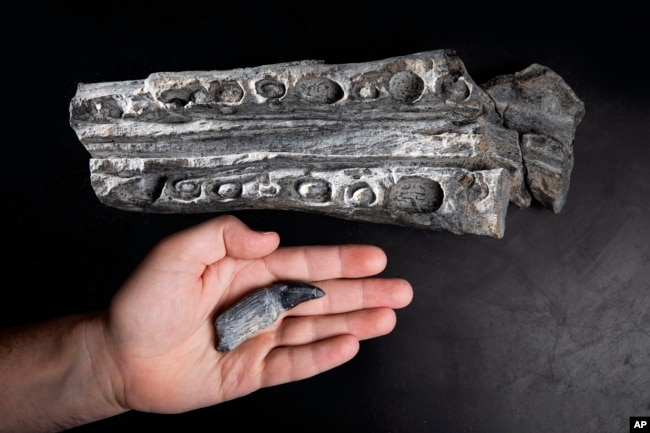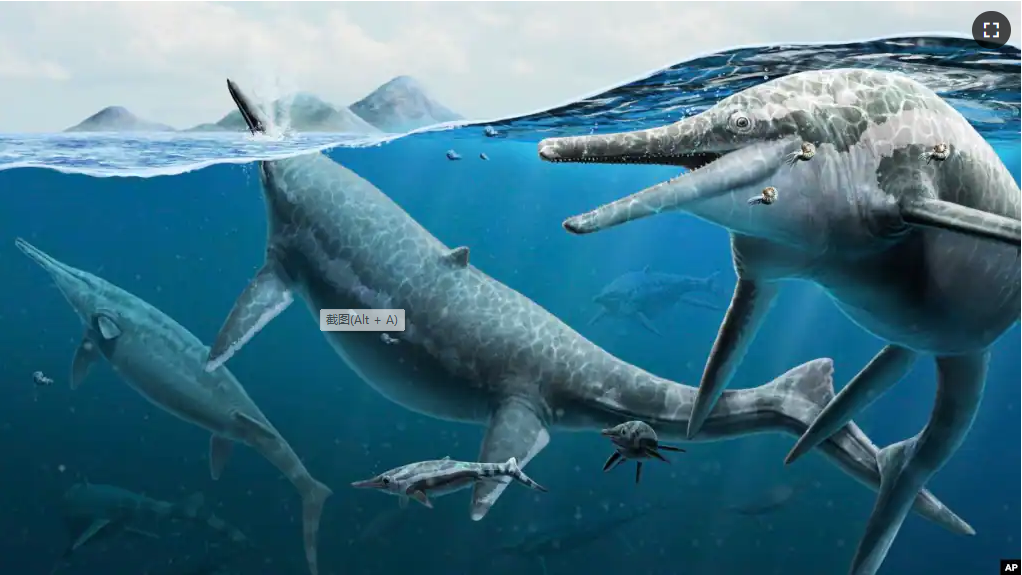Scientists have found new information about an area in the American state of Nevada that contains fossils of giant marine reptiles.
Scientists previously thought it was a place where they came to die. But they now think it may have been where the reptiles came to give birth.
The area is famous for its fossils from giant ichthyosaurs. Those are reptiles that controlled the ancient seas and could grow up to the size of a school bus.
The name ichthyosaur means fish lizard. The creatures were underwater predators with large flippers and big mouths full of teeth.
The ichthyosaur bones in Nevada were found in the 1950s. Since then, many scientists who study fossils, or paleontologists, have investigated how all these creatures could have died together. Now, researchers have proposed a different idea in a study recently published in the publication Current Biology.
“Several lines of evidence all kind of point towards one argument here: That this was a place where giant ichthyosaurs came to give birth,” said co-writer Nicholas Pyenson. He is a fossil marine mammals expert at the Smithsonian National Museum of Natural History.
The area is in Nevada’s Berlin-Ichthyosaur State Park. The area used to be a sea. But it now sits in a dry area near an old mining town, said lead writer Randy Irmis, a paleontologist at the University of Utah.
The creature’s skeletons are very large. Their vertebrae are about 25 centimeters. Bones from their flippers are as thick as large rocks. To get a look at the skeletons, researchers used 3D scanning to create a detailed digital model, Irmis said.

They identified fossils from at least 37 ichthyosaurs from the area, dating back about 230 million years. The bones were preserved in different rock layers. That suggests the creatures could have died hundreds of thousands of years apart rather than all at once, Pyenson said.
A major discovery came when the researchers found some tiny bones among the massive adult fossils. The researchers learned that they belonged to embryos and newborns, Pyenson said.
The researchers concluded that the creatures traveled to the area in groups for protection as they gave birth, like today’s marine animals. The fossils are believed to be from the mothers and their young ones that died there over the years.
“Finding a place to give birth separated from a place where you might feed is really common in the modern world — among whales, among sharks,” Pyenson said.
Other information helped rule out some previous explanations.
Testing the chemicals in the dirt did not turn up any signs of volcanic activities or major changes to the local environment. And research showed that the reptiles were preserved on the ocean floor far from the shore — meaning they probably did not die in a mass beaching event, Irmis said.
The new study offers a likely explanation for an area that has confused paleontologists for many years, said Dean Lomax. He is an ichthyosaur specialist at England’s University of Manchester who was not involved with the research.
All may not be known, but the study “really helps to unlock a little bit more about this fascinating site,” Lomax said.
I’m Dan Novak.
Dan Novak adapted this story for VOA Learning English based on reporting by The Associated Press.
______________________________________________________________
Words in This Story
fossil — n. something that is from a plant or animal which lived in ancient times and that you can see in some rocks
predator — n. an animal that lives by killing and eating other animals
flipper — n. one of two flat body parts that stick out from the side of a seal, whale, etc., and are used by the animal for swimming
vertebrae — n. one of the small bones that are linked together to form the backbone
3-D (three dimensional) – adj. made in a way that causes an image to appear to be three-dimensional, or having height, width and length
preserve — v. to keep in its original state or in good condition
embryo —n. a human or animal in the early stages of development before it is born, hatched, etc.
beach — v. When a large ocean animal has come out of the water onto land and is unable to return to the water.
fascinating — adj. very interesting or appealing
